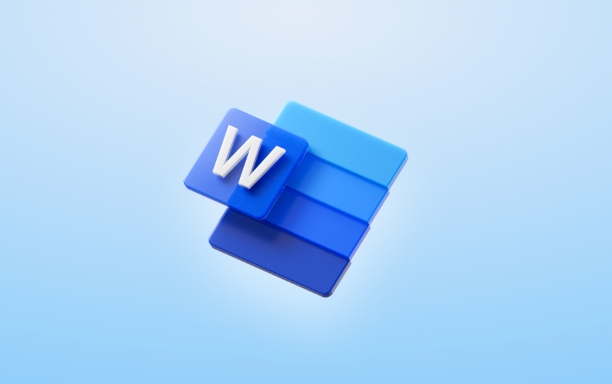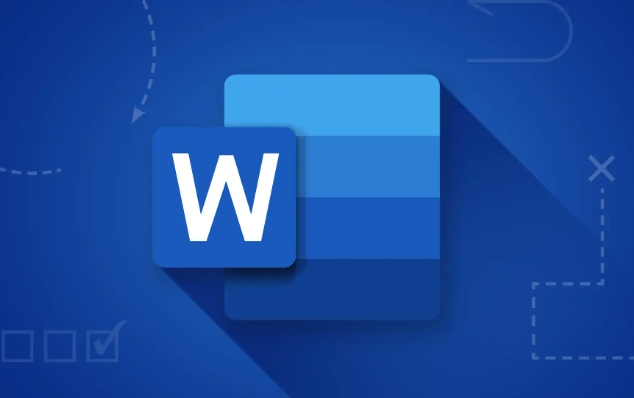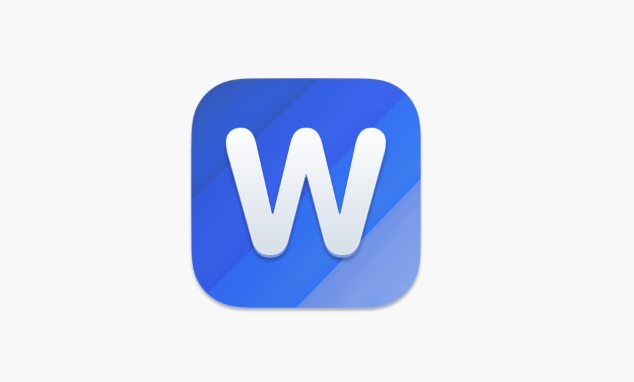how to use styles for headings in word
Using title styles can ensure that the document structure is clear and convenient for subsequent operations. It seems convenient to directly bold and adjust the size of the font, but it is not conducive to typesetting and exporting directories. The advantages of using title styles include: 1. Clear structure and clear levels; 2. More convenient for automatic numbering and directory generation; 3. More stable when collaborating with multiple people. The operation method is: after selecting the text, click the corresponding title style in the "Start" tab, or you can customize the style. When managing title levels, use Title 1 to Title 9 by level, and the navigation pane will automatically display the structure diagram. In addition, title styles can also improve efficiency with functions such as shortcut keys, multi-level lists, style sets, etc.

When writing documents in Word, many people will directly bold and increase the font size to process the title. In fact, this looks similar, but problems can easily arise when you really type or export the directory. The correct way is to use the "style" function, especially the title style, which is not only neat and unified, but also lays the foundation for subsequent operations.

Why should I use title style?
If you do not use styles, each level of title will be manually adjusted. If you modify it once, you have to start the whole article again. And after using the title style:
- Clear structure : the level of the document is clear at a glance
- Automatic numbering and directory generation is more convenient
- It is not easy to mess when collaborate with multiple people
For example, if you write a report, there is a first-level title "Introduction" and a second-level title "Background Analysis". If you use the corresponding "Title 1" and "Title 2" styles, and then you want to export the directory or set the navigation bar, you can do it with one click.

How to style the title?
The default style of Word has been preset "Title 1" to "Title 9", which is basically enough. The operation method is very simple:
- Select the text you want as the title
- In the style library in the "Start" tab, click the corresponding title style (such as "Title 1")
If you think the default style is too ugly, you can also right-click a title style → Modify, customize font, size, color, etc. After the modification, all titles that apply this style will be updated synchronously.

How to manage multiple title levels?
Sometimes you will find that there are large titles, subtitles, and subtitles in the document. At this time, you can use different levels of title styles according to the level:
- First-level titles use "Title 1"
- Secondary titles use "Title 2"
- Level 3 titles are used for "Title 3"
In this way, a hierarchical structure diagram will automatically appear in the navigation pane on the left. Just click to jump to the corresponding position, which is very convenient to read and search.
Also, if you want certain titles not to appear in the directory or navigation, you can change its style to "body" or customize a new style.
How can I use the title style?
In addition to basic purposes, title styles also have some practical tips:
- Shortcut key settings : You can set shortcut keys for each title, such as Ctrl Alt 1 is title 1 to improve efficiency
- Multi-level lists are used in conjunction with : combined with the "Multi-level list" function, the title can be automatically numbered, such as "1. Introduction" and "1.1 Background Introduction"
- Style set Unified Style : If the overall style of the document needs to be adjusted, you can directly change to a "style set", and all title styles will change accordingly.
These functions may seem a bit complicated at first, but once you master it, it will save you a lot of trouble when writing long documents.
Basically that's it. Use title styles well not only for the sake of good looking, but also for the purpose of making the document structure clearer and post-processing more efficient. At the beginning, you may get used to getting bolder and just make it slow.
The above is the detailed content of how to use styles for headings in word. For more information, please follow other related articles on the PHP Chinese website!

Hot AI Tools

Undress AI Tool
Undress images for free

Undresser.AI Undress
AI-powered app for creating realistic nude photos

AI Clothes Remover
Online AI tool for removing clothes from photos.

Clothoff.io
AI clothes remover

Video Face Swap
Swap faces in any video effortlessly with our completely free AI face swap tool!

Hot Article

Hot Tools

Notepad++7.3.1
Easy-to-use and free code editor

SublimeText3 Chinese version
Chinese version, very easy to use

Zend Studio 13.0.1
Powerful PHP integrated development environment

Dreamweaver CS6
Visual web development tools

SublimeText3 Mac version
God-level code editing software (SublimeText3)
 How to use the XLOOKUP function in Excel?
Aug 03, 2025 am 04:39 AM
How to use the XLOOKUP function in Excel?
Aug 03, 2025 am 04:39 AM
XLOOKUP is a modern function used in Excel to replace old functions such as VLOOKUP. 1. The basic syntax is XLOOKUP (find value, search array, return array, [value not found], [match pattern], [search pattern]); 2. Accurate search can be realized, such as =XLOOKUP("P002", A2:A4, B2:B4) returns 15.49; 3. Customize the prompt when not found through the fourth parameter, such as "Productnotfound"; 4. Set the matching pattern to 2, and use wildcards to perform fuzzy search, such as "Joh*" to match names starting with Joh; 5. Set the search mode
 how to add page numbers in word
Aug 05, 2025 am 05:51 AM
how to add page numbers in word
Aug 05, 2025 am 05:51 AM
To add page numbers, you need to master several key operations: First, select the page number position and style through the "Insert" menu. If you start from a certain page, you need to insert the "section break" and cancel the "link to the previous section"; second, set the "Home page different" to hide the home page number, check this option in the "Design" tab and manually delete the home page number; third, modify the page number format such as Roman numerals or Arabic numerals, and select and set the starting page number in the "Page Number Format" after sectioning.
 How to add transitions between slides in a PPT?
Aug 11, 2025 pm 03:31 PM
How to add transitions between slides in a PPT?
Aug 11, 2025 pm 03:31 PM
Open the "Switch" tab in PowerPoint to access all switching effects; 2. Select switching effects such as fade in, push, erase, etc. from the library and click Apply to the current slide; 3. You can choose to keep the effect only or click "All Apps" to unify all slides; 4. Adjust the direction through "Effect Options", set the speed of "Duration", and add sound effects to fine control; 5. Click "Preview" to view the actual effect; it is recommended to keep the switching effect concise and consistent, avoid distraction, and ensure that it enhances rather than weakens information communication, and ultimately achieve a smooth transition between slides.
 How to create a photo collage on a single PPT slide?
Aug 03, 2025 am 03:32 AM
How to create a photo collage on a single PPT slide?
Aug 03, 2025 am 03:32 AM
InsertphotosviatheInserttab,resizeandarrangethemusingAligntoolsforneatpositioning.2.Optionally,useatableorshapesasalayoutguidebyfillingcellsorshapeswithimagesforastructuredgrid.3.Enhancevisualsbyapplyingconsistentstyles,effects,andbackgroundoverlaysf
 Complete guide to collaborate in Word and Real Time Co -authorship
Aug 17, 2025 am 01:24 AM
Complete guide to collaborate in Word and Real Time Co -authorship
Aug 17, 2025 am 01:24 AM
Microsoft Word CollolaBate: How to work with co -authors in Word, edit in real time and manage versions easily.
 How to customize the tapes in Office step by step
Aug 22, 2025 am 06:00 AM
How to customize the tapes in Office step by step
Aug 22, 2025 am 06:00 AM
Learn to customize the tapes in Office: Change names, hide chips and create your own commands.
 How AI Will Give Superpowers To ERP Solutions
Aug 29, 2025 am 07:27 AM
How AI Will Give Superpowers To ERP Solutions
Aug 29, 2025 am 07:27 AM
Artificial intelligence holds the key to transforming ERP (Enterprise Resource Planning) systems into next-generation powerhouses—equipping organizations with what can only be described as digital superpowers. This shift isn't just a minor upgrade; i
 How to Create Folders and Files in OneDrive
Aug 03, 2025 am 04:39 AM
How to Create Folders and Files in OneDrive
Aug 03, 2025 am 04:39 AM
Before you can upload files and folders to OneDrive, it's important to understand how to create them in the first place.Once your files are successfully saved to OneDrive, organizing them effectively can greatly improve your workflow. Below are step-







